People and places: Chinese Australians
Key inquiry question #1
How are people connected to places?
Key inquiry question #2
What factors affect people’s connections to places?
Content Summary
Local and global connections
Students:
- investigate connections that people, including Aboriginal and Torres Strait Islander Peoples, have to local and global places, for example: (ACHGK010, ACHGK011, ACHGK012)
- description of reasons people are connected to places in Australia and/or countries across the world (ie. it’s their birthplace).
Background Notes for Teachers
Album of drawings of Chinese Costumes
Sources 2 to 6 are drawings from an album of drawings created in circa 1880s, held in the State Library of NSW. The drawings depict various habits, customs and ceremonies of Chinese culture including acrobats and performers, female musicians and dress.
Chinese Australians
Chinese immigration to Australia has a long history dating back to the gold rushes in the 1850s. By 1861 there were thriving Chinese communities in pockets of NSW and Victoria running stores, growing fruit and vegetables and working as farm hands. Chinese religious and cultural organisations were established and Chinese New Year celebrations were held in cities and rural towns.
In 2011, 1.8% of Australia’s population was born in China. The 2011 census shows that of the Australian states and territories, NSW has the highest Chinese born population of 2.6%. In Sydney, 4% of the population has been born in China and Chinese people are the second largest migrant population in Sydney.
Chinese New Year
Sydney stages a range of Chinese New Year events in Sydney city and other locations such as Parramatta, Hurstville and Cabramatta. The festival program includes performances, installations, exhibitions and traditionally a Twilight Parade down Sydney’s George Street. The closure of George Street for construction works in late 2015 has put a temporary halt to the city’s street parade.
Syllabus content – keeping Stage 1 Geography and Stage 2 History separate
In Stage 1 Geography students are introduced to the geographical concept of interconnections. In this context, in Stage 1 Geography, students “investigate connections that people, including Aboriginal and Torres Strait Islander Peoples, have to local and global places. (ACHGK010, ACHGK011, ACHGK012)”. The focus is on interconnection. In Stage 1 Chinese celebrations should not be studied in depth.
In Stage 2 History, celebrations and commemorations are explored in more depth, with students studying “Celebrations and commemorations in other places around the world; for example, Bastille Day in France, Independence Day in the USA, including those that are observed in Australia, such as Chinese New Year, Christmas Day, Diwali, Easter, Hanukkah, the Moon Festival and Ramadan. (ACHHK064)”.
Student Activities
Chinese miners
Students study a watercolour painting by George Rowe of Chinese miners during the gold rush and answer questions.
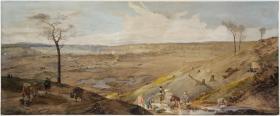
Locating China and countries of birth
Students locate and label China and Australia on a map of the world. From the class tally of birth countries, plot the countries of birth on the map.
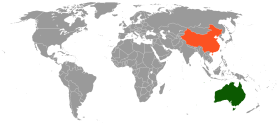
Traditions
Students view painting of traditional Chinese costumes and discuss and answer questions about the cultural traditions of China.
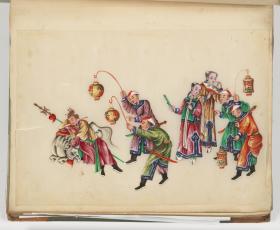
Chinese cultural traditions in Australia
Students view a series of images and paintings and discuss the differences between modern and traditional Chinese costume dress.
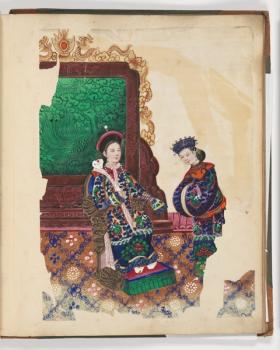
Personal connections to place
Students think about and answer questions on their connection to places, locally, nationally and overseas, through tradition, geography and culture.
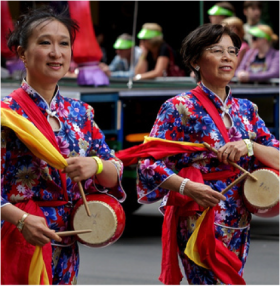
Personal connections poster
Using a world map, or part of a world map, students create a poster showing the places to which they have personal connections.
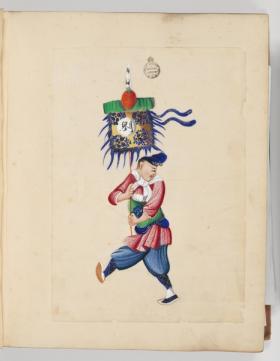
NSW Syllabus for the Australian Curriculum Geography K–6
GE1-1 describes features of places and the connections people have with places
GE1-3 communicates geographical information and uses geographical tools for inquiry
Acquiring geographical information
- pose geographical questions (ACHGS007, ACHGS013)
- collect and record geographical data and information, for example: by observing; by interviewing; or using visual representations (ACHGS008, ACHGS014)
Processing geographical information
- represent data by constructing tables, graphs or maps (ACHGS009, ACHGS015)
- draw conclusions based on the interpretation of geographical information sorted into categories (ACHGS010, ACHGS016)
Communicating geographical information
- present findings in a range of communication forms (ACHGS011, ACHGS017)
- reflect on their learning and suggest responses to their findings (ACHGS012, ACHGS018)
Place: the significance of places and what they are like (e.g location and features of local places and other places in the world).
Space: the significance of location and spatial distribution, and ways people organise and manage the spaces that we live in (e.g where activities are located and how spaces can be organised).
Environment: the significance of the environment in human life, and the important interrelationships between humans and the environment (e.g natural and human features of a place; daily and seasonal weather patterns of places).
Interconnection: no object of geographical study can be viewed in isolation (e.g local and global links people have with places and the special connection Aboriginal and Torres Strait Islander Peoples maintain with Country/Place).
Scale: the way that geographical phenomena and problems can be examined at different spatial levels (e.g various scales by which places can be defined such as local suburbs, towns and large cities).
- Asia and Australia’s engagement with Asia
- Intercultural understanding
- Literacy
- Civics and citizenship
- Difference and diversity
Resources
Picture books
A New Year’s Reunion by Yu Li- Qiong and Zhu Cheng-Liang
Grandpa’s Mask by Jing Jing Guo
An Aussie Year: Twelve Months in the Life of Australian Kids by Tania McCartney and Tina Snerling
Videos
Chinese New Year Festival 2015 Highlights by City of Sydney
Sydney Chinese New Year Festival highlights 2014 by City of Sydney
Websites
Chinese New Year Festival, City of Sydney